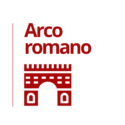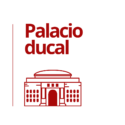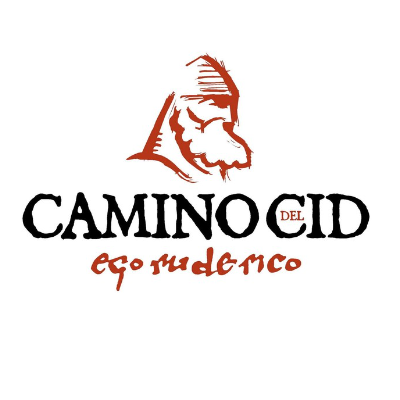
Medinaceli: Historic Town in Spain with a Unique Roman Arch
Step into the enchanting streets of Medinaceli and experience the charm of a town where history lives in every corner. From ancient monuments to vibrant local culture, this hidden treasure in Spain awaits your discovery.

Medinaceli is one of the “Most Beautiful Villages of Spain,” a distinction that guarantees authentic charm and rich heritage.
📍 You can follow this route directly on the map during your visit to the town of Medinaceli.
Enable geolocation on your device to see your real-time position on the route.

1 Roman Arch: Unique on the peninsula for its triple arcade with orientalizing style, dating from the 2nd century. Located along the wall, it marked the boundary between the Cluniac Judicial Convent and the Caesaraugustan territory, on the Roman Antonine road.

2 Convent of Santa Isabel: Founded in 1528 by the Poor Clares, it is the only active convent among the four that once existed in the town. It stands out for its central courtyard and the Romanesque church of San Martín, originally Romanesque and extensively restored in the 18th century. Its façade features beautiful molded windows as well as a lovely segmental arch framed by the Franciscan cord.

3 Medieval Snow Well: This ancient snow well, with its distinctive cylindrical shape and stone dome, was built from limestone, tuff, and sandstone bonded with mortar. Located on the northwest slope of the town, it was part of the traditional system used to preserve snow for use throughout the year — a fascinating glimpse into the ingenuity of medieval life.
4 Church of San Román: Formerly a Jerónimas monastery until 1939 and a parish church until 1558, this 13th-century building was possibly constructed on the site of an earlier synagogue. Its history reflects the rich cultural and religious layers of Medinaceli through the centuries.
Main Square (Plaza Mayor): Located on the site of the ancient Roman forum, it stands out for its iconic monuments such as the Ducal Palace and the Alhóndiga.

5 Ducal Palace: Historic residence of the Dukes of Medinaceli, this palace combines Renaissance and Baroque styles, showcasing the prestige of the noble family in the 16th and 17th centuries.

6 Archaeological Hall: Educational space dedicated to exhibiting and explaining the archaeological findings of Medinaceli.

7 The Alhóndiga: A public building used for the buying and selling of wheat, built in the 16th and 17th centuries.

8 Arab Arch: One of the four gates (on Kardo Street) of the original Roman camp. It was rebuilt and slightly moved during the Arab period (hence its name), and later modified after the Reconquest, taking its current shape as a wide ogival arch.

9 Walls:
Explore the walls with Celtiberian, Roman, and Arab remains. Each stone tells the story of the successive civilizations that defended the town since the 10th century.
Celtiberian foundation remains were discovered, on which the Romans built using large ashlar stones. When the Arabs arrived, they found «many undeniable ancient signs,» and Galib, under the orders of Abd al-Rahman III, rebuilt the defenses in 946. The Castilians succeeded them in the works, and in 1128, Alfonso VII restored them again. The different styles are clearly visible in the remaining walls.

10 Coz Gate: One of the old entrances to the medieval town, facing the Jalón valley. Although little remains today, this site evokes Medinaceli’s defensive past.
A viewpoint offers a panoramic view of the valley, and a monolith pays tribute to the passage of El Cid.

Rodrigo Díaz de Vivar , nicknamed El Cid, was an 11th-century Castilian knight famous for his exploits during the Reconquista. His story inspired the great medieval epic, the Cantar de mio Cid.
📍 Medinaceli is part of the Camino del Cid, a cultural and tourist route following the footsteps of the legendary hero.

11 Castle:
Currently used as a cemetery, its few reconstructed remains are located where the Arab Alcazaba once stood (the political and religious center of the town). Later, it became the castle of the Counts of Medinaceli until they moved to the Ducal Palace.

12 Roman Mosaic of San Pedro Square: These 2nd-century AD Roman mosaics are a valuable artistic testimony to Medinaceli’s past. Part of them remains hidden beneath modern buildings, but their history and beauty invite further discovery.

13 Collegiate Church of Our Lady of the Assumption: Built in 1561 over a Romanesque church, this late Gothic church houses a hidden crypt and valuable works of art, ranging from ironwork to Baroque paintings.
Need help? Don’t hesitate to contact the Tourist Office.
📍 13 Campo de San Nicolás Street, next to the Roman Arch
☎ +34 975 32 63 47
Opening Hours
Monday to Sunday from 10:00 am to 6:00 pm
"After your walk, take the time to enjoy the local food and relax in a unique setting."




